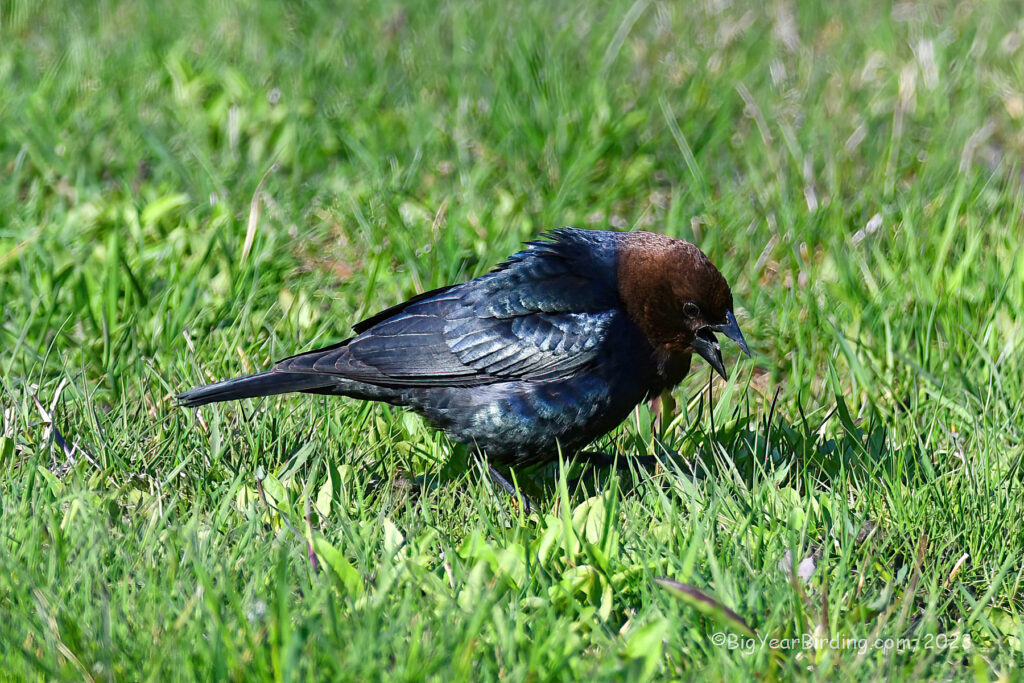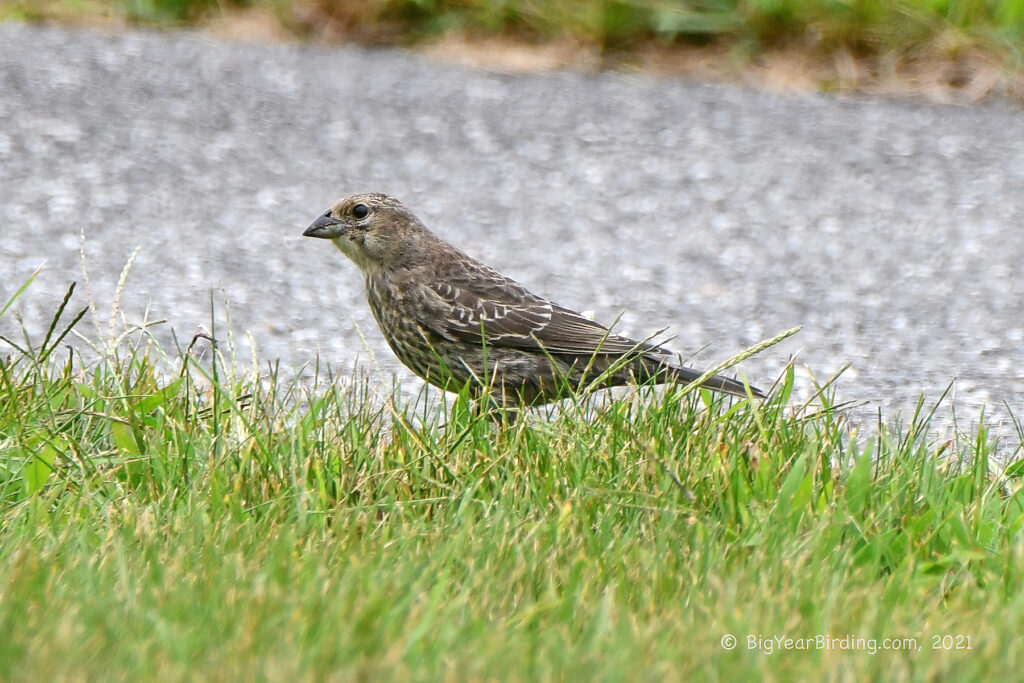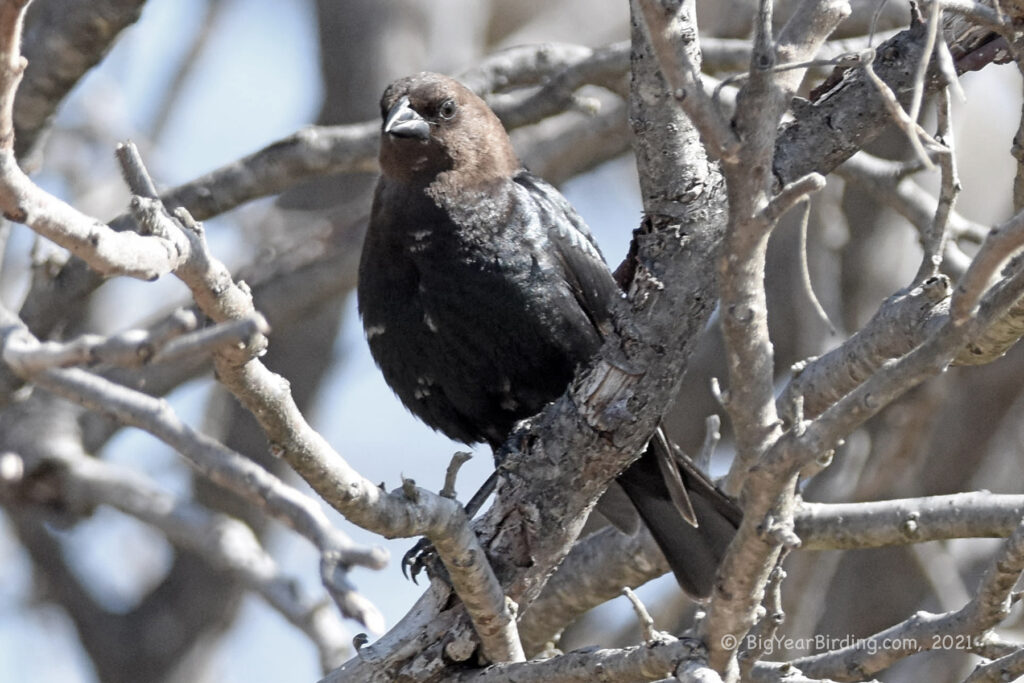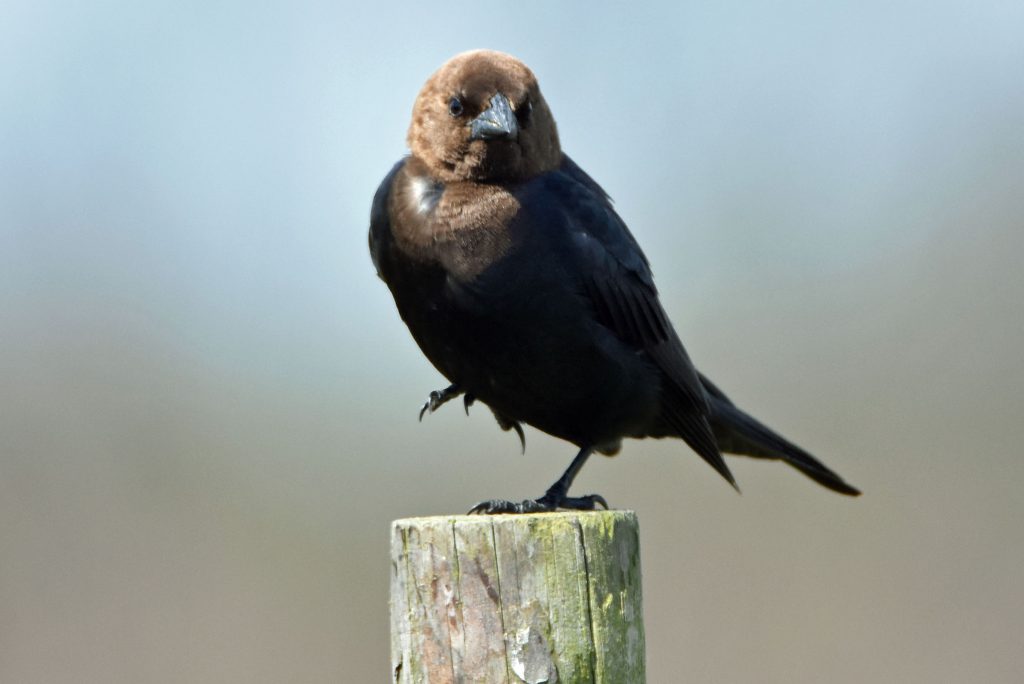
The Brown-headed Cowbird (Molothrus ater) is a small passerine bird that belongs to the family Icteridae. Adult males measure about 7.5 inches (19 cm) in length and weigh around 2.1 ounces (60 g), while adult females are slightly smaller, measuring about 6.7 inches (17 cm) in length and weighing around 1.4 ounces (40 g). Their most distinguishing field mark is their glossy black plumage and brown head, which contrasts sharply with their white underparts. They also have a long, pointed bill that is adapted for feeding on seeds and insects.

Brown-headed Cowbirds are native to North America and can be found throughout most of the United States and southern Canada. They are year-round residents in parts of the southern United States, but populations in more northern regions are migratory. During the breeding season, males will establish territories and court females with a unique display of tail spreading and vocalizations. Females will lay their eggs in the nests of other bird species, often resulting in the cowbird chick being raised by the host parents.

During the winter months, Brown-headed Cowbirds will form flocks with other species of blackbirds and travel to warmer regions in the southern United States and Mexico. In the spring, they will return to their breeding grounds and repeat the breeding cycle. Brown-headed Cowbirds are known for their aggressive behavior towards other bird species, often competing for food and nesting sites. They are also considered a brood parasite, as their habit of laying eggs in other species’ nests can harm the host’s reproductive success.
Conservation efforts for Brown-headed Cowbirds have been focused on managing their impact on other bird species rather than their own population. Measures such as removing cowbird eggs from host nests and providing habitat for threatened bird species have been implemented to mitigate their impact. However, the effectiveness of these measures is still being studied.

Overall, the Brown-headed Cowbird is a unique bird species that is adapted for survival in a variety of habitats. Their behavior as a brood parasite has resulted in both positi ve and negative effects on other bird species, making them a subject of ongoing study and conservation efforts.
ve and negative effects on other bird species, making them a subject of ongoing study and conservation efforts.
